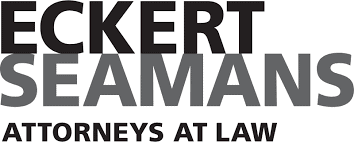By Jill Cohen, Esq. and Shannon Kapadia, Esq., Eckert Seamans Cherin & Mellott, LLC

On September 9, 2021, the federal government announced a six-pronged set of measures to lead our country on the “Path out of the Pandemic.” The six prongs include:
1. Vaccinating the Unvaccinated;
2. Protecting the Vaccinated;
3. Keeping Schools Safely Open;
4. Increasing Testing and Requiring Masking;
5. Protecting Our Economic Recovery; and
6. Improving Care for those with COVID-19.
The stated shared goal of all the prongs is to “ensure that we are using every available tool to combat COVID-19 and save even more lives in the months ahead, while also keeping schools open and safe, and protecting our economy from lockdowns and damage.” (www.whitehouse.gov/covidplan).
While protecting the economy is welcome news for employers in the construction industry, each of the six prongs raises many questions of what this means practically for employers nationwide. Undoubtedly, the most challenging aspect of the plan ahead is prong one: “Vaccinating the Unvaccinated.”
Mandatory Vaccines
According to the Six Prong Plan, there are currently over 175 million fully vaccinated Americans, with over 80 million eligible who have not yet received the first shot. For employers, arguably the most pertinent measure is a requirement for private employers with more than 100 employees to take steps to ensure 100% of their workforce is either vaccinated or will produce a weekly negative covid test. Relatedly, any contractor that does business with the federal government will be required to have 100% of its employees vaccinated. This is estimated to affect approximately 2.5 million workers, with many obviously in the construction industry.
Under the Plan, the Department of Labor’s Occupational Safety and Health Administration (OSHA) is tasked with developing an Emergency Temporary Standard requiring all employers with 100 or more employees to ensure their workforce is fully vaccinated, or have unvaccinated employees submit weekly COVID-19 test reports. OSHA has not yet released the Emergency Standards, but employers all over the nation have started to prepare and plan for compliance therewith.

Construction Workplaces
As vaccines and science have become politicized, employers have struggled to implement policies that will keep their workforces safe and keep their businesses running. In many cases, employers have faced pushback from their workforces, regardless of what policy they implement relating to COVID-19, particularly with respect to masks or vaccines.
Anecdotally, many construction industry employers, therefore, welcome this directive from the federal government, because it renders the decision to be one of compliance rather than based solely upon the employer’s subjective decision. Many construction employers have struggled for months with the question of whether to mandate vaccines or testing among their workforces, knowing that many employees would not get vaccinated unless required and yet also knowing that the greater vaccination rate among their workforce, the less risk of workplace disruptions due to COVID-19 and the less risk of COVID-related liabilities to the employer.

Next Steps
The first step for any workplace will be to determine whether the vaccine mandate will apply to them, either by being a federal contractor or by having 100+ employees. For now, the latter is more complicated because until OSHA announces the Emergency Temporary Standards, it is unclear how the number of employees will be calculated. For instance, will this figure include both part-time and full-time employees? And will related entities be counted as one?
In the interim, while the nation awaits the Emergency Temporary Standards, employers are well-advised as a first step to begin surveying which of its employees are vaccinated or not. Having this information at the ready will enable companies to develop a strategy and leap into action as soon as the Standards are announced.
Furthermore, in the meantime, employers should also begin to brainstorm internally and with outside labor and employment counsel about (a) plans to address religious and medical accommodation requests, (b) whether to mandate the vaccine or allow for opting out for weekly testing (if permitted by the Emergency Temporary Standards), (c) how to track covid test results for unvaccinated, and (d) reevaluate safety policies already in place such as social distancing, masking, and regular sanitizing.
Remaining Questions
The Path Out of the Pandemic creates just as many questions about how it will be implemented, as it does provide direction. For instance, it will be some time before employers know:
- Will anyone be able to opt-out and get a weekly negative test, or will that option be limited to employees with religious or medical accommodations?
- Who should pay for the weekly tests? And what type of test suffices?
- How will OSHA determine the 100 employee threshold? And will remote employees be counted and have to comply?
- How will compliance be enforced and what are the penalties?
- What recordkeeping will the employers have to do?
- When will the Emergency Temporary Standards be adopted and enforced?
- How will union collective bargaining agreements interact with these new requirements? Can any of this be the subject of bargaining?
- Will there be legal challenges to the Emergency Temporary Standards once adopted, and how will that affect the timeline for compliance?
The sooner employers begin to think about these questions and prepare with trusted legal counsel, the better equipped they will be to react when OSHA implements the Emergency Temporary Standards pertaining to vaccines.

Jill R. Cohen is a Princeton, NJ-based attorney with Eckert Seamans Cherin & Mellott, LLC and divides her practice between complex commercial litigation and employment litigation. Jill is experienced in representing corporations, executives, and publicly traded companies in intricate cases involving securities, class action defense, and contract issues, in both individual plaintiff and class action lawsuits. Jill’s employment experience includes representing, counseling, and training employers regarding a variety of employment matters, including discrimination, retaliation, harassment, employee disciplinary issues, individual and group termination, and wage and hour issues.

Shannon Kapadia concentrates her practice on complex commercial litigation, with a strong emphasis on labor and employment matters. Shannon also handles matters relating to data privacy and security, intellectual property, and landlord-tenant issues. Shannon counsels both public and private sector employers in management-side labor and employment issues such as hiring, termination, and employee discipline. Shannon also represents employers concerning employment-related litigation and compliance with workplace safety and health (OSHA) standards and requirements. Additionally, Shannon represents building owners in commercial landlord-tenant disputes and handles various other commercial litigation matters.

Eckert Seamans Cherin & Mellott LLC has nearly 375 attorneys located in 15 offices throughout the United States, including Pittsburgh, Harrisburg, and Philadelphia, Pennsylvania; Boston, Massachusetts; Washington, D.C.; Richmond, Virginia; Wilmington, Delaware; Newark and Princeton, New Jersey; White Plains, New York; Buffalo, NY; Providence, Rhode Island; Troy, Michigan; Charleston, West Virginia; and Hartford, Connecticut. The firm provides a broad range of legal services in the areas of litigation, including mass tort and products liability litigation, corporate and business law, intellectual property law, labor and employment relations, aviation law, bankruptcy, and creditors’ rights, employee benefits, environmental law, construction law, public finance, real estate, tax, and estate law, and trucking and transportation law. For more information about the firm, please visit www.eckertseamans.com.
Important topics like this one will be discussed at the 2022 CURT-CII Joint Conference, February 7-9, 2022, in Orlando, Florida. Learn more about “2022 . . . Now What – The New Construction Industry” online.
Connect with CURT to stay up to date on everything construction-related. Link up with us on Facebook and LinkedIn for more great content that will help you lead your team and succeed in your position.
CURT’S MISSION IS TO CREATE A COMPETITIVE ADVANTAGE FOR CONSTRUCTION USERS. CURT ACCOMPLISHES THIS MULTIFACETED OBJECTIVE BY PROVIDING AGGRESSIVE LEADERSHIP ON THOSE BUSINESS ISSUES THAT PROMOTE EXCELLENCE IN THE CREATION OF CAPITAL ASSETS.
